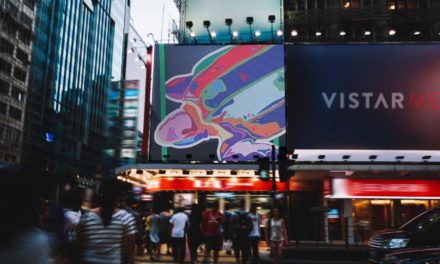Maximising viewability for better returns on ad spend must take into account mitigating brand safety risks while leveraging programmatic advertising
Programmatic advertising is rapidly dominating media buying, with 70% of digital spend now allocated to this area, according to WARC’s latest study. However, brand safety risks remain a top concern, with 60% of advertisers citing it as their biggest challenge.
What should marketers and advertisers do about this, especially during the year-end festive shopping season?
MartechAsia sought out some insights from Laura Quigley, SVP APAC, IAS, who has been at the forefront of programmatic advertising, with over a decade of expertise in ad verification and digital media.
As we approach the year-end festive e-commerce/ social commerce surge, how should marketers maximise viewability for better returns on ad spend?
Laura Quigley (LQ): As Southeast Asia’s e-commerce landscape continues to expand, with retail e-commerce sales expected to more than double from $93 billion in 2023 to $193 billion by 2028, marketers must adapt to leverage this growth effectively. Markets like Indonesia, Malaysia, and Singapore are leading this surge, with Singapore’s e-commerce revenue alone projected to reach $8.4 billion by 2029.

For digital ads to make an impact, they need to be seen — not just served. Advertisers must ensure that their ads have the opportunity to be seen by real people wherever they are. As the year-end festive season approaches, marketers need to maximise viewability for better returns on ad spend.
With social platforms boasting the highest user engagement rates in the region, they have become essential for brands aiming to increase visibility. However, even with social media advertising trending in Southeast Asia, it is worth noting that advertisers will need to keep in mind an omnichannel approach in the long run to create lasting and impactful campaigns.
Internet connectivity in Southeast Asia is facilitated mainly via smartphones, with 88.9% of internet users relying on mobile devices. The region has also seen an impressive rise of 266 million social media users in the past year. This trend is particularly strong in Indonesia, where 62.8% of users, along with 61.5% of Malaysians and 60.0% of Filipinos, regularly visit social media and digital platforms to discover brands.
Given these engagement rates, social media is a critical channel for driving brand visibility and engagement. However, to ensure success, marketers must leverage advanced analytics tools to measure ad performance and optimise placements. This allows brands to reach the right audience while maintaining visibility in safe, high-quality environments.
Interestingly, IAS’s recent consumer research reveals that 91% of Singaporean consumers believe that the surrounding content of online ads must be appropriate, highlighting the importance of aligning ad placements with local cultural values to maintain consumer trust.
Viewability remains the bedrock of media quality assurance. As digital advertising becomes more sophisticated, media buyers and sellers want to not only prove their ability to drive results but also want to transact on viewability — making it a customisable currency. Implementing real-time performance monitoring enables marketers to adjust their strategies dynamically, effectively responding to shifting consumer behaviours during peak shopping periods and maximising ad visibility during the festive season.
What are some brand safety risks that come with programmatic advertising, and how should Asia Pacific marketers navigate this risk landscape?
LQ: Programmatic advertising offers significant advantages in scale and efficiency, but it also brings brand safety risks, particularly when ads appear next to harmful or inappropriate content. In Singapore, IAS’s Media Quality Report revealed that programmatic buys pose nearly double the brand risk compared to direct buys, with violent content alone presenting a 61.3% risk.
Another key concern is the prevalence of Made-For-Advertising (MFA) sites—platforms designed to attract traffic through clickbait and sensational content. These sites prioritise ad revenue over content quality by bombarding users with intrusive ads, which drive no real outcomes for brands.
Programmatic’s automated nature can lead to ad placements on low-quality sites, resulting in wasted ad spend and brand risk. Conversion rates on these platforms show exactly how important quality ad placements are to campaign effectiveness – IAS’s recent research has discovered that conversions on quality sites were 174% higher than those on MFA sites.
In addition to MFA sites, programmatic advertising increases the risk of ads appearing on misinformation-spreading platforms. With new URLs being created daily and less control over ad placements, brands may inadvertently find their ads placed on sites that spread false information, further harming their reputation.
To navigate this complex landscape, marketers need to deploy robust safeguards, such as advanced pre-bid and post-bid solutions. These measures can help protect brands from these risks by ensuring that ads appear in safe, high-quality environments that align with the brand’s values.
Please share some best practices for leveraging programmatic to maximise campaign efficiency.
LQ: Marketers should adopt several best practices to maximise campaign efficiency with programmatic advertising. Moving beyond outdated keyword-blocking strategies, embracing AI-powered contextual targeting solutions allows for more precise ad placements. This ensures ads avoid unsuitable content while maintaining reach and performance. Tools that offer granular reporting are also essential, as they enable real-time monitoring of ad placements. This allows marketers to optimise campaigns away from unsafe or low-performing environments, ensuring they get the most value from their programmatic spending.
Leveraging measurement and optimisation tools are crucial for maintaining brand safety at scale. AI-powered analysis helps protect campaigns from emerging risks across the open web and social media, ensuring that brands remain in secure and suitable environments.
Finally, marketers should consider reallocating budgets away from high-risk placements, such as those prone to misinformation or ad fraud, and focus on investing in more trusted environments. Using tools for risk avoidance and verification can help maximise return on ad spend while safeguarding brand reputation.
In your opinion, what does the future of digital media and advertising look like in 2025 and beyond?
LQ: The continued advancement of AI and machine learning will drive enhanced targeting precision and real-time ad optimisation, ensuring that ads reach the right audience at the right time. The continued rise of Generative AI (Gen-AI) will revolutionise user-generated content (UGC), offering new opportunities for targeted advertising but also raising concerns over bias, fake news, and misinformation.
Advertisers and publishers must ensure transparency and partner with global measurement and optimisation companies to help brands appear alongside safe, trusted, and quality content.
In addition, new advertising mediums, such as augmented reality (AR) and virtual reality (VR), are also set to become mainstream – with the global AR and VR market projected to grow by USD 442.99 billion by 2028. This will offer consumers more interactive and immersive experiences, pushing advertisers to adapt to capture attention in both physical and virtual spaces.
Sustainability is also becoming a critical issue for the future of digital media. Higher media quality reduces carbon emissions, and ongoing industry collaboration is necessary to reduce digital media’s environmental impact further.
Overall, the ad tech industry must balance protection, precision, and performance to promote safety and sustainability across all channels while ensuring digital advertising remains a powerful tool for businesses.


















